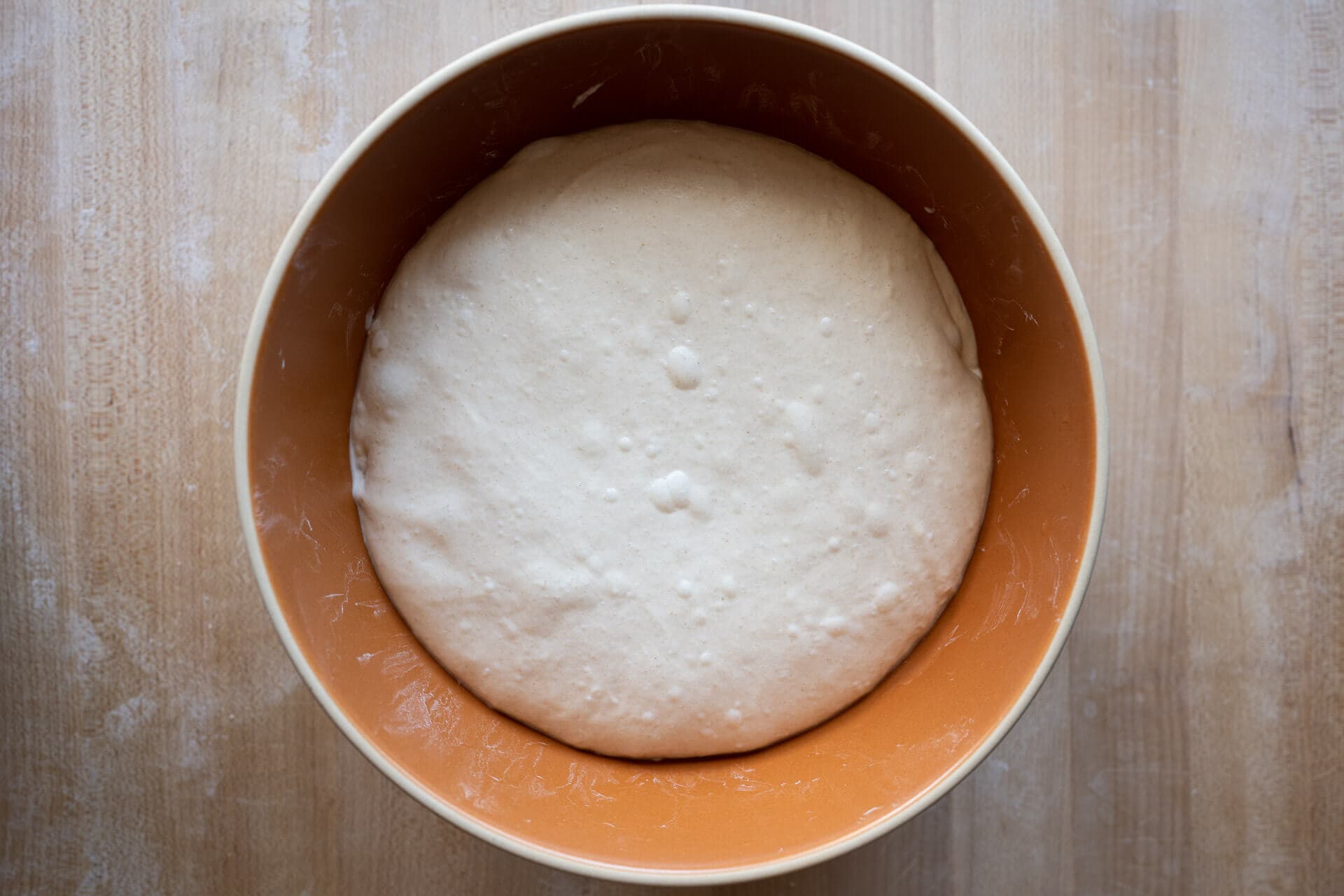How to ferment sourdough properly?
Sourdough bread has been around for centuries and is known for its unique flavor, texture, and health benefits. Fermenting sourdough properly is essential to achieve the desired taste and texture. Whether you’re an experienced baker or a beginner, fermenting sourdough can be challenging.
Proper Fermentation is crucial for baking great sourdough bread. To excel in this craft, it is essential to understand two fundamental concepts in more detail: appropriate Fermentation and proper dough handling.
We’ll walk you through the step-by-step guide to fermenting sourdough, as well as tips and tricks to ensure you get the perfect loaf every time.
How To Ferment Sourdough Properly
A starter is the headquarters of your microbial culture that you maintain indefinitely. At the same time, sourdough is the starter bound to be mixed into bread dough.
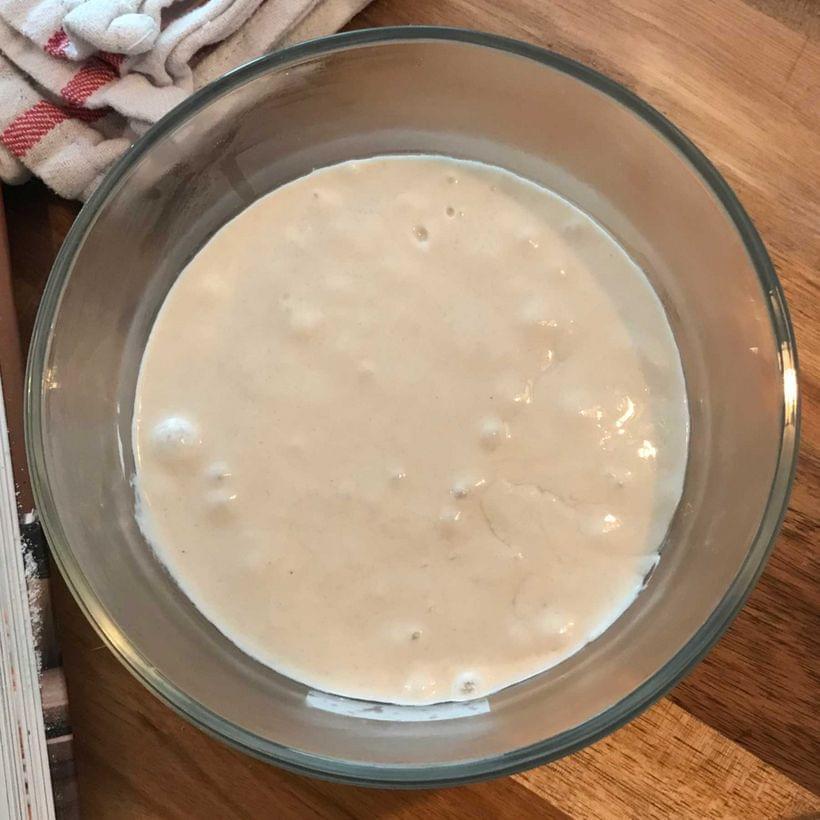
When you bake bread, you take some of that starter and move it to your sourdough, which, when mature, will be ready to raise bread.
Starter Sourdough Ferment
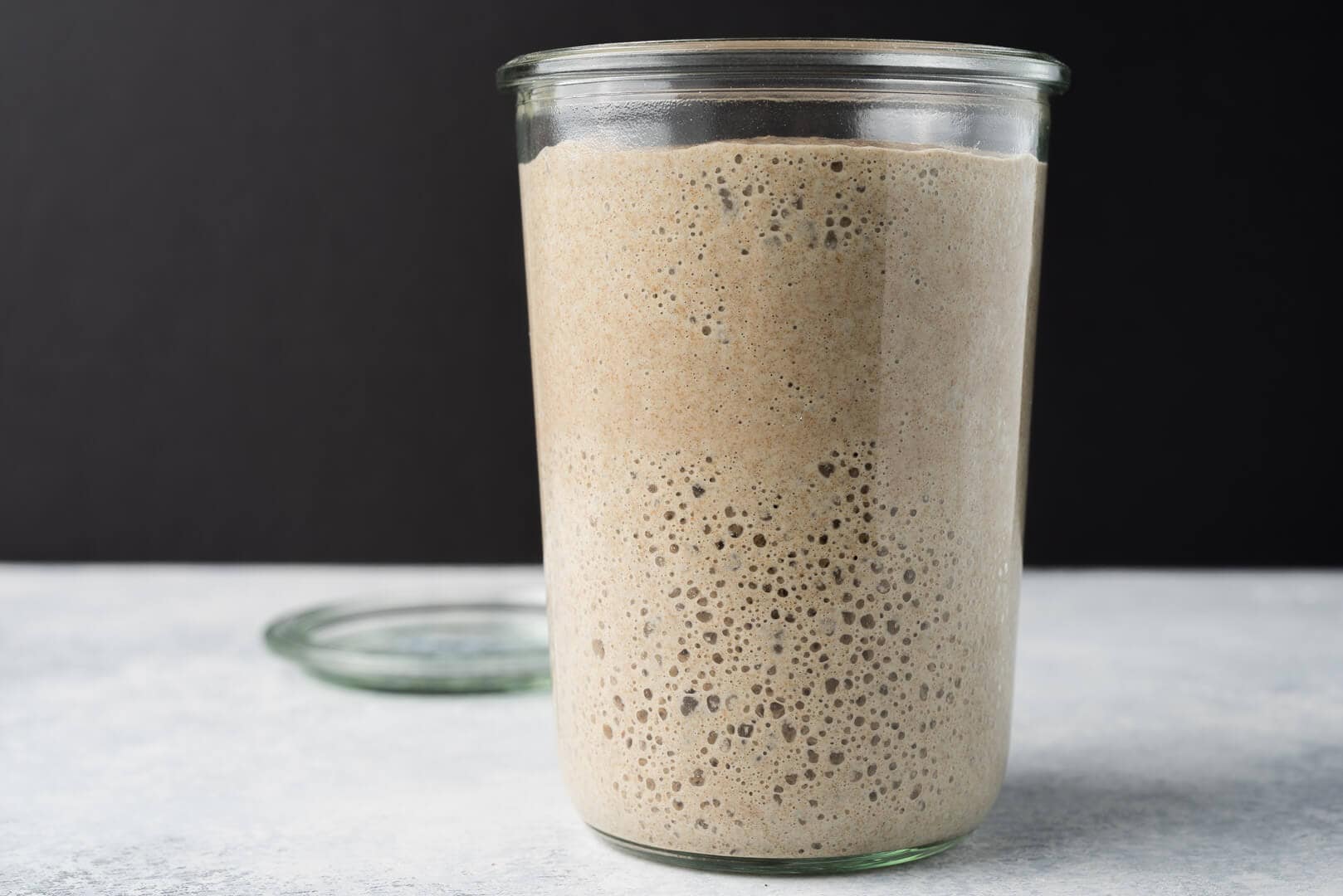
Good sourdough bread depends on having a vigorous, active starter that doubles or even quadruples in volume as it peaks.
A more robust and dynamic starter improves the chances of producing tall, light, and open-crumbed bread.
Your starter should have a relatively thick consistency and show signs of solid activity.
Sourdough and Maturity

The sourdough is part of a mature starter you mix into your Dough. To create enough starter for baking, you take some part of the original culture and feed it essentially 1:1:1 (starter to flour to water).
This gives you a mature starter to work with. As well as increasing how much starter is available, using a sourdough allows you to adjust its composition for specific bread doughs.
Controlling Fermentation
You can control the handling ratio (starter to flour to water) and temperature to suit your schedule. When handling the Dough, ensure that you use the proper techniques, including folding and shaping.
You can also retard the Fermentation by putting the Dough in the refrigerator to slow down the activity. Proper Fermentation involves:
- Ensuring that your starter is healthy and active.
- Understanding the difference between a starter and a sourdough.
- Controlling factors like temperature and hydration.
Handling the Sourdough
After preparing your starter and sourdough, it’s time to take it. The way you handle your Dough can significantly impact the final product. First, you want to avoid over-kneading the Dough, as this can break down the gluten structure, leading to dense and tough bread.
Instead, use the folding technique, which helps build a network and strengthens the gluten. The folding technique involves stretching and folding the Dough onto itself, which helps trap air and creates an open crumb structure.
To fold your Dough, gently stretch it out and fold it onto itself, rotating the Dough 90 degrees and repeating the process four to six times during the bulk fermentation process.
Preparing Sourdough Bread Fermentation
Bulk fermentation is the stage where the Dough is left to ferment and rise, allowing the yeast to multiply and the Dough to develop flavor. The duration of bulk Fermentation can vary depending on the temperature and humidity of the environment.

Generally, bulk Fermentation takes anywhere from 4 to 8 hours.
During bulk Fermentation, you’ll want to check on the Dough every 30 minutes to see how it’s progressing. Look for signs of Fermentation, such as increased volume, a bubbly surface, and a slightly sour aroma.
You can also perform a poke test to check if the Dough is ready. Press your finger gently into the Dough, and if the impression remains, it’s ready for shaping.
Shaping the Dough
Generally, you’ll want to create a tight surface tension to help the bread rise and develop a good shape. To shape your Dough, gently press it down and fold the edges toward the center, creating a tight ball.
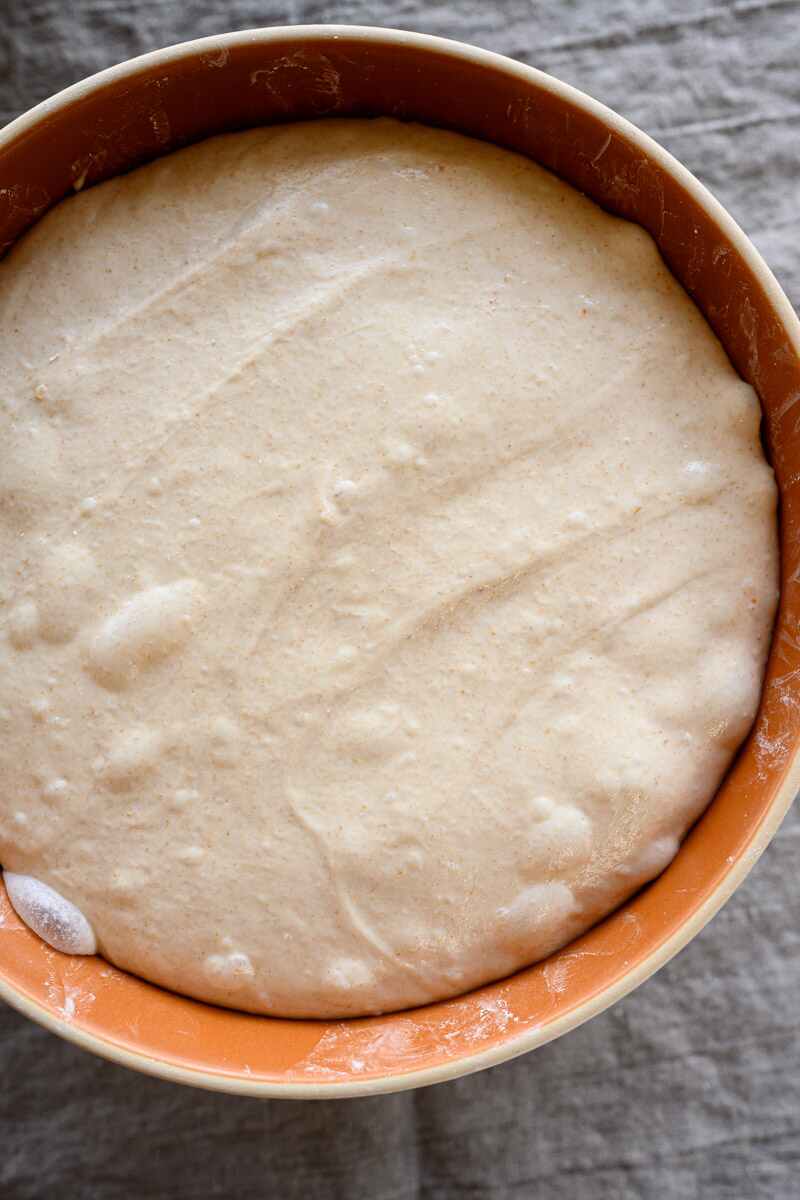
Let the Dough rest for a few minutes before shaping it again.
You can use a proofing basket or a colander lined with a cloth to help shape the Dough. Once shaped, the Dough goes through a second proofing period before baking.
Proofing and Baking the Dough
Proofing is the final stage, where the Dough is left to rise before baking. The duration of proofing can vary, but generally, it takes anywhere from 1 to 2 hours, depending on the temperature and humidity of the environment.
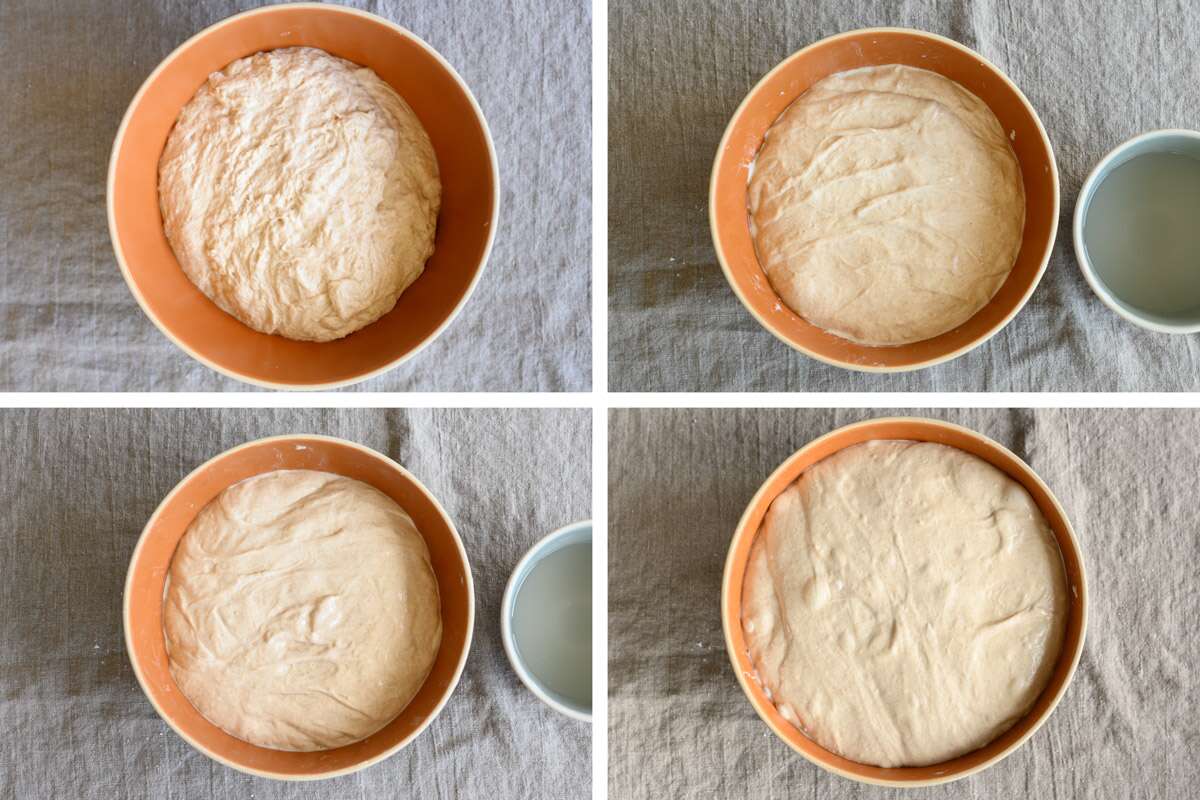
You can cover the Dough with a damp cloth or place it in a plastic bag to create a humid atmosphere. Once proofed, the Dough is ready for baking.
Baking sourdough bread requires a high heat and steamy environment for a good rise and crust. Preheat your oven to around 450°F and place a baking stone or a Dutch oven inside.
You can also add steam to the range by placing a pan of water inside. Once the oven is heated, transfer the shaped dough onto the baking stone or Dutch oven and bake for 30 to 40 minutes or until the crust is golden brown.
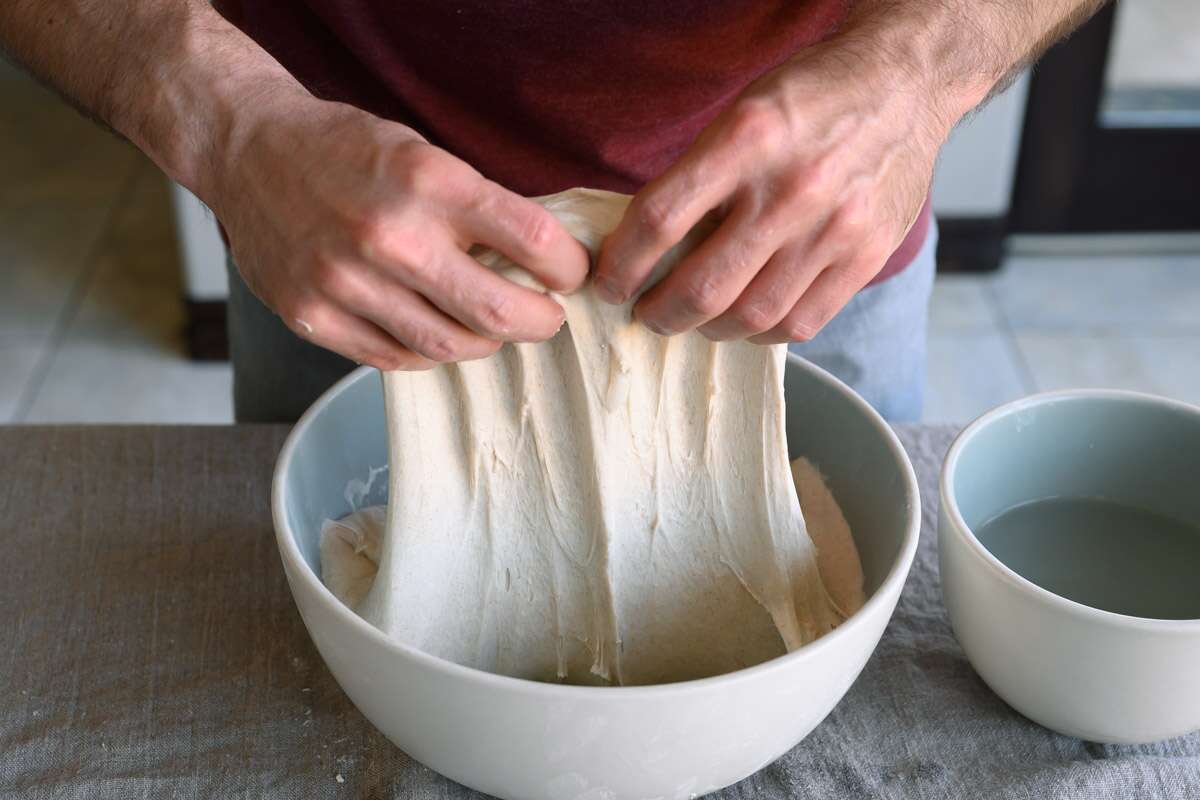
FAQs
How is sourdough bread different from regular bread?
Unlike traditional bread that uses commercial yeast, sourdough bread uses wild yeasts and bacteria. This gives it a unique flavor and texture. Sourdough bread is also known to have a longer shelf life and may be easier to digest for some people.
How do I make a sourdough starter?
To make a sourdough starter, mix equal parts of flour and water and let it sit at room temperature for several days, feeding it with fresh flour and water each day. As the mixture ferments, it will begin to bubble and rise. Once it is active and bubbly, it is ready to use as a leavening agent for sourdough bread.
How do I know when my sourdough starter is ready to use?
Your sourdough starter should be active and bubbly before you use it in a bread recipe. This usually takes several days of daily feedings. You can test your starter by dropping a small amount into a glass of water. If it floats, it is ready to use.
Can I use all-purpose flour to make sourdough bread?
Yes, all-purpose flour can be used to make sourdough bread. However, many bakers prefer mixing all-purpose flour and whole wheat flour for a more complex flavor and texture.
How long does it take to make sourdough bread?
Making sourdough bread can take anywhere from 24 hours to several days, depending on the recipe and method used. The fermentation process is critical to the flavor and texture of sourdough bread, so it is essential to allow enough time for the Dough to ferment correctly.
How do I store sourdough bread?
Sourdough bread should be stored in a paper bag or bread box at room temperature for up to a week. It can also be frozen for more extended storage. Avoid storing sourdough bread in plastic bags, as this can cause it to become soggy.
Conclusion
In conclusion, mastering how to ferment sourdough properly is the cornerstone of baking a superb sourdough loaf. This process is a delicate balance of time, temperature, and technique, requiring attention to the behavior of your starter and dough. By fostering the right conditions, you can cultivate the unique sourdough flavors and textures that are sought after by enthusiasts and bakers alike.
